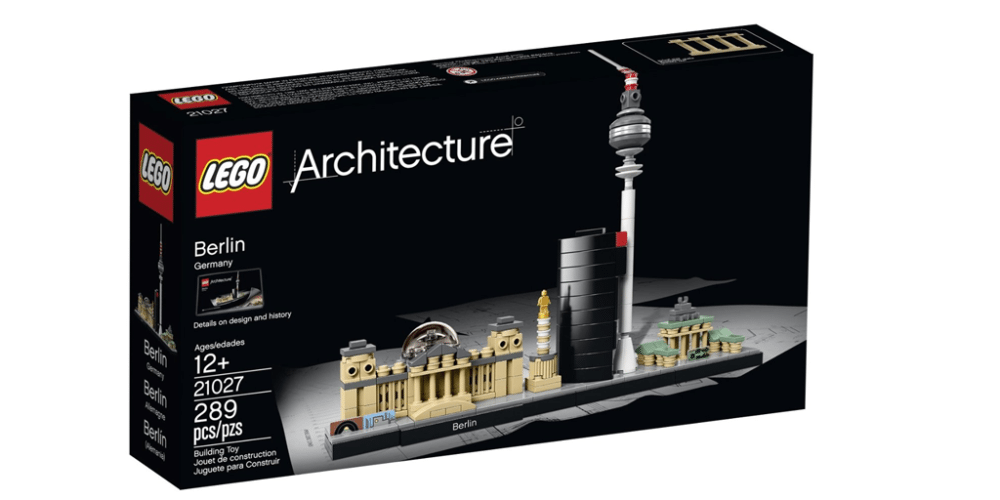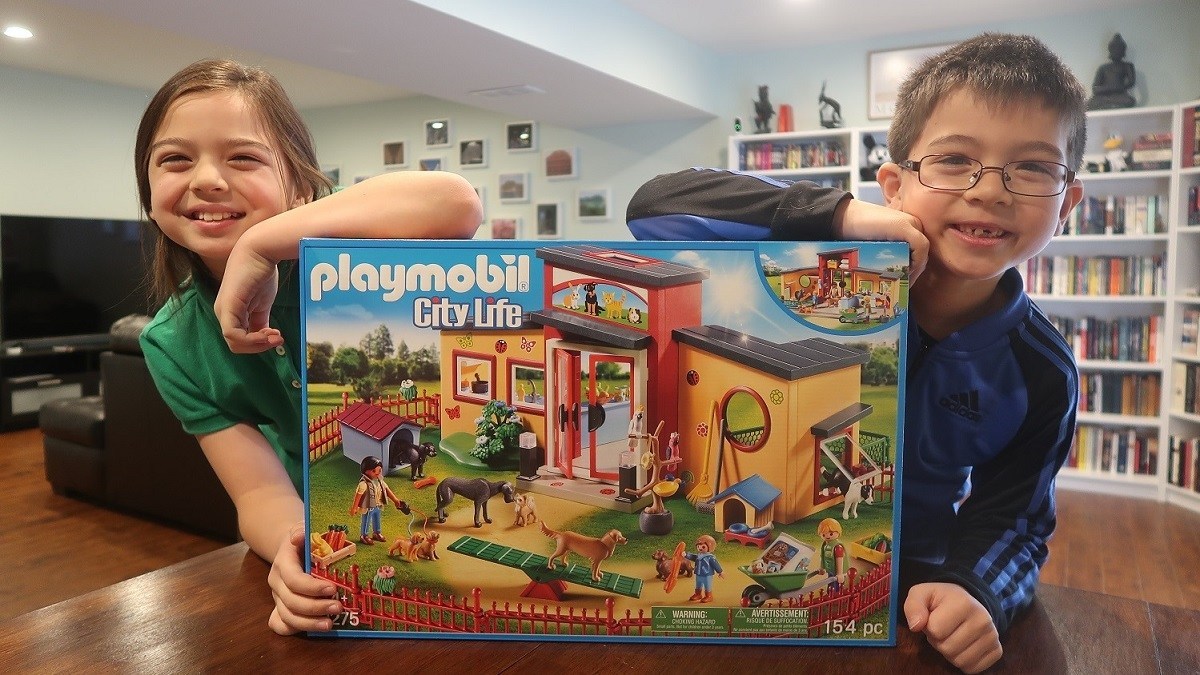
The LEGO Architecture Berlin skyline is well-considered a highlight of the history and culture of Germany. Featuring structures which define not only the skyline, this kit also tells the history of Berlin as the world around it changed dramatically. With 289 pieces and at $26.93, it passes the 10-cent rule, and it has several elements not available anywhere else. I couldn’t help but look up each building as I constructed the kit, and was blown away by the staggering history of the buildings. Berlin, like many places in Europe, has a history centuries older than America. I couldn’t help reading and re-reading the accounts, so I felt driven to share the highlights of each building.

First, an overview of Berlin. Founded in 1237, this 800-year-old city has seen its nationality change several times, and it has been a center of European history for most of its existence. Founded in the Margraviate of Brandenburg, it was later appointed the capital of Prussia before the German Empire was founded in 1871. This change made Berlin the center of European politics for decades.
After World War I, the Weimar Republic was founded (1918). This republic was then supplanted by the Third Reich in 1933. The Third Reich collapsed at the end of World War II, and, under the London Protocol, Berlin was divided into four parts controlled by American, British, French, and Soviet powers. As the world moved into the Cold War, the city was cut in two by the Berlin Wall, and the western side was enclosed as the last enclave of Ally control in East Germany. At the end of the Cold War, Berlin (and the rest of Germany) was reunified at last.

Reichstag
The first exhibit in the LEGO Berlin set is the Reichstag Building, or (more properly) Deutscher Bundestag – Plenarbereich Reichstagsgebäude. It was built to house the Imperial Diet of the German Empire in 1894.
In 1933, it was set on fire. This act of arson was an early turning point in the establishment of Nazi Germany, as the arsonist (Marinus ven der Lubb) was a known communist. Playing to the fear of communism was a key part of the Nazi party’s rise to power. The Reichstag suffered further in World War II, being indirectly bombed by US forces.
The Reichstag was slightly restored in the ’60s, but was not refurbished until after the German reunification in 1990. The restoration was completed in 1999, and it is once again the home of the German parliament, the Bundestag.

Victory Column
The Victory Column may well be the most controversial icon of Berlin’s skyline. Its original location was quite close to the Reichstag, but the Nazi administration moved it to the Great Star (Großer Stern), a large intersection in the axis of the city. This relocation is credited with saving it from destruction in World War II, as the area of its previous location was bombed during US raids.
The column itself has a long history. It was inaugurated on September 2, 1873, as a monument celebrating victories in the Danish-Prussian War, the Austro-Prussian War, and the Franco-Prussian War. The victories of the Unification Wars also inspired the addition of Goldelse, a golden angel, represented by a golden minifig in the Architecture kit.
One of the more controversial moments in recent history was its use by Presidential candidate Obama in 2008, in his Berlin address. The controversy, of course, was due to its association with the Nazi party.

Deutsche Bahn Tower
The Bahn-Tower, (or Railway Tower) is a marvel of modern architecture. Designed by Helmut Jach, it is a 26-story commercial office building which opened in 2000. It is the 6th-tallest building in Berlin, and the 3rd featured building in the LEGO Berlin skyline scene. It is currently owned by Morgan Stanley, but the skyscraper was built by Sony.
Despite the official name of Bahn-Tower, it is often called the Deutsche Bahn Tower, because it is the headquarts of the Deutsche Bahn (German Railway).

Berlin TV Tower
Built in the 1960s, the Fernsehturm (Television Tower) was built by the administration of the German Democratic Republic as a symbol of Berlin. It has maintained its fame thanks to its astounding height of 368 meters (1207.35 feet). It is the tallest German Structure, and the second tallest structure in the European Union, only being beaten by 0.5m by the Riga Radio and TV Tower in Latvia.

The Brandenburg Gate
The Brandenburger Tor (Brandenburg Gate) in this LEGO kit is an interesting interpretation of its real-life counterpart. This simple design disguises the critical history of the Brandenburg Gate. The gate was built in the late 1700s, and has been a landmark of Berlin for centuries. Originally commissioned as a representation of peace, it prominently featured a quadriga (a chariot and 3 horses) pulling Eirene, the goddess of peace.
The Brandenburg Gate is a complex structure which replaced a guardhouse gate in the same location. It is designed after the Proylaea, a gateway in Athens, Greece. Despite its inspiration, the design is also consistent with Berlin’s architectural classicism.
After Napoleon defeated the Prussian military at the battle of Jena-Auerstedt, he took the Quadriga to Paris in 1806. In 1814, however, the tide shifted. General Ernst voc Pfuel occupied Paris and brought the Quadriga home. At this time, it was redesigned and the goddess was then depicted to be Victoria, and her lance was redesigned with an Iron Cross, surrounded by oak leaves, and crowned with the Prussian eagle.
The Brandenburg Gate was destined to be an icon in other wars, eventually becoming a symbol of the Nazi party. Much of the gate was damaged in World War II, but both East Berlin and West Berlin restored it. With the construction of the Berlin Wall, protests and conflict rendered the gate a controversial location. The wall originally blocked the West side, but it was given a smaller wall on the East side. This small wall is represented in the LEGO kit, along with a couple other remnants of the wall.

Bundesarchiv, B 145 Bild-F079009-0032 / CC-BY-SA 3.0
When the wall was demolished, the Brandenburg Gate saw its own revival, symbolizing freedom and reunification for the no-longer-divided population of Berlin. It was reopened on December 22, 1989, to allow the East German Prime Minister Hans Modrow to meet with Helmut Kohl, a chancellor from West Germany. Unlike the Victory Tower, this gate is considered a celebratory location rather than a reminder of the Nazi regime, possibly because it was off-limits to all of Berlin during the Cold War.
The gate was privately refurbished at the turn of the century, to the tune of €6,000,000. It was reopened on October 3, 2002, celebrating 12 years of German reunification. It is now often used to host large gatherings of over a million people, and it has been the venue for the Festival of Freedom in 2009, New Years’ celebrations, and even the victory rally of the German national football team after they won the 2014 FIFA World Cup.

The Berlin Wall
The Berlin Wall, of course, is a major part of Berlin’s history. But like its current role in Germany, it is minimally featured in this set. The wall is in pieces, covered in graffiti and beautifully rendered art, and generally accepted to be part of the past to remember, but not with pride. Honoring that sentiment in the LEGO kit, there are only three small portions of the wall, each decorated with art. One of the portions is placed in front of the Brandenburg Gate, a reminder of how the division of the Berlin Wall took the Gate from both sides of the city.
In summary, I’d like to reflect on the accomplishment of this kit. With fewer than 300 pieces, LEGO Architecture: Berlin highlights six of the most memorable and striking parts of the Berlin skyline, representing designs from the last four centuries. The LEGO designers did not balk at the political memories of Berlin, and instead embraced them in order to show the complex history Berliners live with on a daily basis.
Because of this, the Berlin skyline is one of my favorite LEGO designs to date. I keep it where I can see it every day, and be reminded that the past is for learning from, not for despising or forgetting about.
LEGO Architecture has a collection of six skylines you can collect.
If you’d like to discover more about Berlin, check out a first-person account of Arthur Holmes, a US architect sent to aid in the reconstruction of Berlin at First Person History.
Disclaimer: The author received a unit of LEGO Architecture: Berlin for review purposes.




